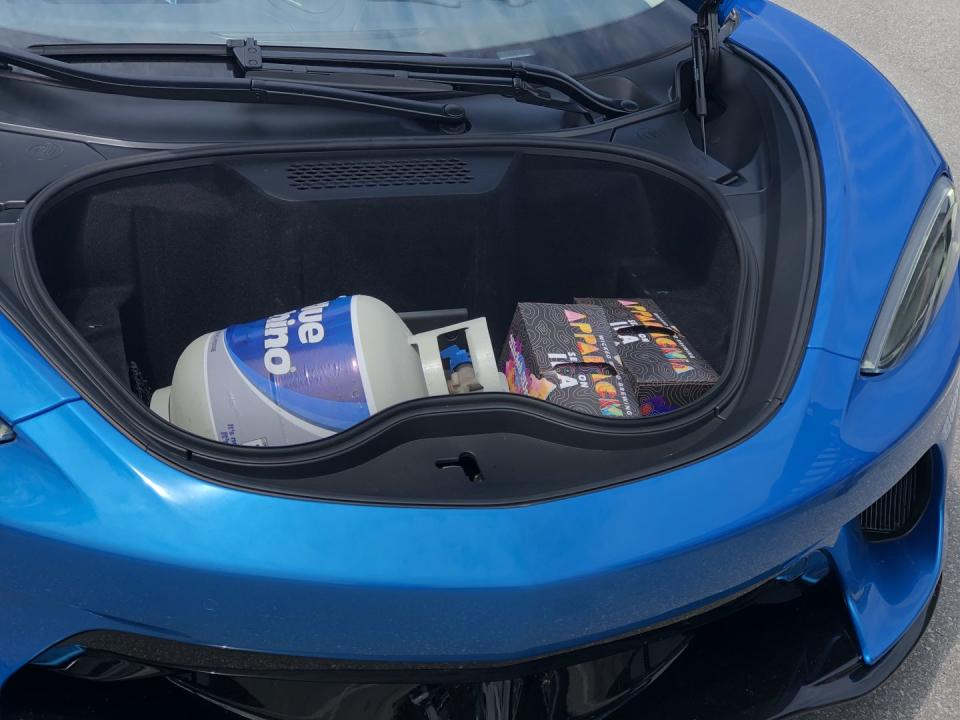Ezra Dyer: The GT Is McLaren's Crossover

It took a while for Patient Zero, the Porsche Cayenne, to infect its performance-car cohort with its virulent strain of performance and practicality. But it here we are, with an Aston-Martin SUV. And one from Bentley, and Alfa-Romeo, and Lamborghini. Ferrari is working on a jacked-up people-mover. It was inevitable—people buy these things, and car companies like to build things that people buy—but also sort of sad. The world needs Kia Tellurides, but et tu, Maranello? Among this glut of 600-horsepower palanquins, we find the McLaren GT, which is what happens when McLaren tries to build a practical car. It is the closest McLaren gets to a crossover, which, as you can see, is not remotely close at all. Hallelujah.

The GT is McLaren's attempt at dignified utility. It's a nitromethane-powered chainsaw with three cupholders. It's a tornado knocking politely on the door. It's the late Macho Man Randy Savage using his inside voice. After conducting acceleration tests on the GT, deputy editor Tony Quiroga declared, "It's so quick, it almost hurts." Yeah. And that's before you hit the brakes and feel like your torso is about be bisected by the shoulder belt.
The primary difference between the GT and any of McLaren's other flame-throwing rip-your-face off supercars is the lack of a bulkhead behind the seats. The interior is open from the windshield straight back to the taillights, the engine behind the passengers snugged under layers of insulation and topped with a material McLaren modestly calls SuperFabric. It's a textured, rugged upholstery that's up to the task of, say, hauling lumber home from Lowe's. That's the kind of chore you do with a practical car, so that's what I did with the GT. Which has a power hatch, just like your Buick Envision.

And it all went fine. Yes, I had to saw my eight-foot two-by-fours roughly in half to keep them confined to the cargo area. But then, aided by the optional $500 luggage straps, I was ready to embark on my home improvement project, just like the adjacent contractors in their F-250s. As I like to say around the job site, you can't spell "working" without "Woking"!
Incidentally, I've been to Woking, where McLarens are built, and when you step inside the crash-landed extraterrestrial spaceship that is the factory, you understand why an SUV is not forthcoming. It's just not in them to do it—and I'm not just talking about capital and production lines and supply chains. Inside that place, the business is building fast cars. Sometimes they go off on a tangent and build even faster cars, or cars that are preposterously fast, or so fast they're illegal, but that's the breadth of the project. Do one thing and do it well. McLarens are so fully realized, so confident in their role as the British foil to Ferrari and Lamborghini, that we tend to forget that McLaren has only been building road cars for as long as Tesla. Yes, they built a hundred cars in the 1990s, but McLaren as we know it began with the 2012 MP4-12C. The current Toyota 4Runner has been around longer than McLaren as a volume manufacturer.

So every McLaren hews to a certain theme: carbon-fiber tub, mid-rear turbocharged flat-plane V-8, seven-speed dual-clutch transmission. That formula gives us the all-conquering Senna and the sub-$200,000 (barely) 570S. And the GT, which tries but can barely hide its race-car roots. Yes, the GT is quiet by McLaren standards, and if you set the suspension and engine-management knobs to comfort, it'll plod along and play docile commuter. And, verily, you can carry a lot of stuff. Using the rear cargo area and the frunk up front, I crammed in a 5'4" surfboard, two carry-on bags, a propane tank and two 12-packs. As one would. The only real annoying thing about the GT is that when you try to text your friends about it, autocorrect keeps insisting on "McKaren."
Once you offload all that detritus, flick those console knobs to "T" and do a launch-control start, all pretense of daily-driver sanity is erased by the savage deployment of horsepower. Yeah, the new Corvette can also claim a sub-three-second 0–60-mph time, but trust me that it's not the same after that, the McLaren pulling into the triple-digits with a terrible ferocity, a roller coaster that spit the brake. For the time being, the GT—a 203-mph two-seater—is the closest McLaren gets to sensibility, and it's really not that sensible at all. McLaren doesn't build crossovers, but they do build Formula 1 cars. You can tell.
You Might Also Like

 Yahoo Autos
Yahoo Autos 